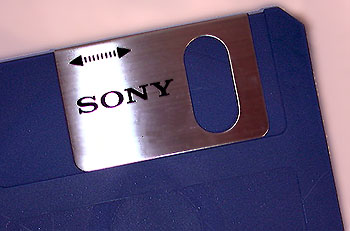
There’s Old Media…and then there’s old media. Electronics and technology giant Sony has announced (Japanese) that, as of March 2011, it will no longer manufacture that once-ubiquitous symbol of the computer age, the 3.5-inch floppy disk. Sony says it made its first 3.5-inch floppy in 1981 and has been selling them since 1983, at least in Japan. Eventually, the 3.5-inch floppy format took over for larger 5.25-inch disks—and created a bit of confusion because their firm plastic sleeves weren’t floppy at all, leading many computer neophytes to refer to 3.5-inch media as “hard disks.”
Sony says it may stop sales and distribution of floppy disks in some markets before the March 2011 date due to dwindling demand. Even amongst practitioners of “sneakernet” computing, floppy disks have been almost totally supplanted by recordable optical media, USB thumb drives, and portable hard drives, due to those media’s greater storage capacities, reliability, and transfer speeds.
The death of the floppy disk was first sounded by Apple back in 1998 with the original iMac, which was the first mainstream computer to forego the traditional floppy drive. At the time, critics protested that Apple was abandoning the floppy too soon, and predicted nobody would by even a nifty blue-colored computer if it didn’t have a floppy. Although external peripheral floppy drives were reasonably popular as iMac accessories, the broader computer market did turn its back on floppy disks shortly thereafter—and, of course, the iMac was the beginning of what’s turned into over a decade of major success for Apple.
Sony is one of a small group of companies that still sells floppy disk media; however, Sony had the bulk of the Japanese floppy market: the company estimated it sold about 12 million floppies in Japan last year, representing over two-thirds of the market.
Editors' Recommendations
- Western Digital responds to claims that SanDisk SSD failures have design flaw
- Sony’s new 3D display tech keeps getting bigger and better
- Get a SanDisk Extreme Pro 4TB SSD for a ridiculous price today
- Sony’s new InZone gaming headsets raise the bar for PS5 audio
- Sony’s first gaming monitor is under $1,000 and all-in on HDR


